
|
It approached to the sun down to 0.73 A.U. on Mar. 24, and brightened up to 4.7 mag (Mar. 11, Michael Mattiazzo). Now it is fading. But it is still bright as 7.7 mag (June 16, Carlos Labordena). In the Northern Hemisphere, it keeps observable in good condition while fading gradually. In the Southern Hemisphere, it keeps locating low in the morning sky after this.
Date(TT) R.A. (2000) Decl. Delta r Elong. m1 Best Time(A, h)
June 15 0 15.53 44 3.4 1.774 1.659 66 8.0 2:58 (240, 47)
June 22 0 9.57 49 8.5 1.795 1.757 71 8.2 2:59 (233, 53)
|
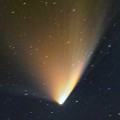
|
It passed the perihelion on Mar. 10, and brightened up to 0-1 mag. Now it is fading. But it is still bright as 9.9 mag (June 16, Carlos Labordena). It is observable all night in the Northern Hemisphere. It is not observable in the Southern Hemisphere for a while after this.
Date(TT) R.A. (2000) Decl. Delta r Elong. m1 Best Time(A, h)
June 15 14 53.04 76 35.7 2.032 2.061 77 8.9 21:15 (180, 49)
June 22 14 38.02 72 16.4 2.134 2.169 78 9.2 21:04 (176, 53)
|

|
It brightens up to 10 mag in summer. But the condition is worst and the comet will be hardly observable in this apparition. In the Northern Hemisphere, it will be observable in autumn when the comet will be fainter than 16 mag.
Date(TT) R.A. (2000) Decl. Delta r Elong. m1 Best Time(A, h)
June 15 4 22.66 18 11.8 2.031 1.103 17 11.3 2:58 (239,-11)
June 22 4 52.83 19 59.9 2.013 1.078 16 10.9 2:59 (237,-10)
|
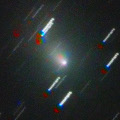
|
Now it is so bright as 10.5 mag (May 19, Chris Wyatt). In the Southern Hemisphere, it keeps observable for a long time until the comet fades out, although it keeps locating low. It will never be observable again in the Northern Hemisphere.
Date(TT) R.A. (2000) Decl. Delta r Elong. m1 Best Time(A, h)
June 15 6 30.60 -7 32.2 2.332 1.593 33 12.4 21:02 (102,-30)
June 22 6 46.00 -10 30.1 2.342 1.626 35 12.5 21:04 (102,-35)
|

|
It brightened up to 12 mag in 2012. It is bright as 14.1 mag still now (May 19, Chris Wyatt). It keeps 13-14 mag until autumn. It locates somewhat low in the Northern Hemisphere.
Date(TT) R.A. (2000) Decl. Delta r Elong. m1 Best Time(A, h)
June 15 19 56.72 -31 15.4 2.066 2.972 147 12.9 2:25 ( 0, 24)
June 22 19 53.34 -32 9.3 2.034 2.982 154 12.9 1:54 ( 0, 23)
|

|
It brightened up to 11-12 mag in 2012. Now it is bright as 11.0 mag (June 3, Juan Jose Gonzalez). It keeps observable in good condition until July in the Northern Hemisphere, or until September in the Southern Hemisphere.
Date(TT) R.A. (2000) Decl. Delta r Elong. m1 Best Time(A, h)
June 15 13 28.56 -10 54.8 5.457 6.038 120 13.1 21:02 ( 23, 41)
June 22 13 24.02 -10 36.3 5.599 6.065 112 13.1 21:04 ( 33, 38)
|
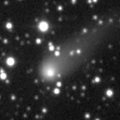
|
Now it is 13.8 mag (June 11, Sandor Szabo). It keeps bright at 13-14 mag for a long time until 2014. It keeps observable for a long time in the Northern Hemisphere. It locates somewhat low in the Southern Hemisphere.
Date(TT) R.A. (2000) Decl. Delta r Elong. m1 Best Time(A, h)
June 15 20 55.18 33 16.8 5.545 5.903 105 13.3 2:58 (287, 85)
June 22 20 48.93 33 13.1 5.466 5.904 110 13.3 2:49 ( 0, 88)
|
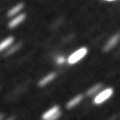
|
It brightened up to 14.4 mag until April (Apr. 13, Sandor Szabo). It will brighten up to 12 mag from summer to autumn. Now it is not observable. In the Southern Hemisphere, it will become observable in August, then it keeps observable while fading gradually. It will never be observable again in the Northern Hemisphere.
Date(TT) R.A. (2000) Decl. Delta r Elong. m1 Best Time(A, h)
June 15 5 19.72 27 19.7 2.709 1.699 5 13.5 2:58 (222,-13)
June 22 5 36.25 25 5.8 2.658 1.652 6 13.3 2:59 (226,-13)
|

|
Now it is 12.2 mag and visible visually (June 15, Con Stoitsis).
Date(TT) R.A. (2000) Decl. Delta r Elong. m1 Best Time(A, h)
June 15 13 35.45 -21 9.5 5.569 6.212 125 13.7 21:02 ( 17, 32)
June 22 13 35.00 -20 56.4 5.659 6.210 118 13.7 21:04 ( 25, 30)
|

|
It is expected to be a great comet in 2013 autumn when the comet approaches to the sun down to only 0.01 A.U. It keeps visible with naked eyes from November to January, and can be extremely bright as Venus or more at the highlight. However, the brightening has declined at 15.5 mag from January through May in 2013. Now it is not observable. The condition is excellent in the Northern Hemisphere. It will appear in the morning sky again in late August, then it keeps observable almost all through the period of brightening, at the highlight, and of fading. The condition is not good in the Southern Hemisphere. It is not observable at all the latter part of the highlight, and it keeps low all through the period.
Date(TT) R.A. (2000) Decl. Delta r Elong. m1 Best Time(A, h)
June 15 7 10.60 27 37.7 4.238 3.321 22 13.8 21:02 (124, 0)
June 22 7 16.90 27 17.9 4.184 3.227 17 13.7 21:04 (128, -4)
|
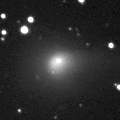
|
Now it is bright as 13.5 mag (June 12, Sandor Szabo). It keeps locating in the morning sky for a long time after this. I will keep the current brightness for a long time.
Date(TT) R.A. (2000) Decl. Delta r Elong. m1 Best Time(A, h)
June 15 0 37.52 11 41.0 2.050 1.966 70 14.0 2:58 (277, 30)
June 22 0 47.62 11 55.0 2.040 2.031 75 14.1 2:59 (279, 34)
|

|
Now it is 14.5 mag (June 11, Sandor Szabo). It keeps 13 mag and observable in good condition in the Northern Hemisphere for a long time from 2013 to 2014. But it locates low in July and August. In the Southern Hemisphere, it is not observable until 2014 autumn.
Date(TT) R.A. (2000) Decl. Delta r Elong. m1 Best Time(A, h)
June 15 9 1.91 50 14.1 4.473 3.873 48 14.1 21:02 (133, 30)
June 22 9 4.50 50 16.1 4.508 3.845 44 14.1 21:04 (135, 26)
|
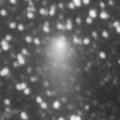
|
It kept bright as 11-13 mag for a long time from 2012 summer to 2013 summer. It will be fading after this. Now it is 14.3 mag (June 11, Sandor Szabo). In the Northern Hemisphere, it keeps observable for a long time until the comet fades out. In the Southern Hemisphere, it becomes low in late August, then it will be hardly observable.
Date(TT) R.A. (2000) Decl. Delta r Elong. m1 Best Time(A, h)
June 15 13 24.18 20 0.3 2.989 3.403 105 14.2 21:02 ( 52, 68)
June 22 13 20.54 20 28.4 3.162 3.461 98 14.4 21:04 ( 65, 62)
|

|
Big asteroid discovered in 1906. It suddenly showed the cometary activity on Dec. 11, 2010, probably due to an impact of a small object. It has already turned to be stellar. It locates high in the Southern Hemisphere. But it still locates very low in the Northern Hemisphere.
Date(TT) R.A. (2000) Decl. Delta r Elong. m1 Best Time(A, h)
June 15 0 36.73 -12 5.3 2.886 2.899 80 14.5 2:58 (297, 15)
June 22 0 43.24 -11 53.5 2.807 2.911 85 14.5 2:59 (301, 19)
|
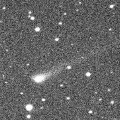
|
Now it is 14.0 mag (June 3, Chris Wyatt). It keeps bright as 13-14 mag for a long time from 2013 to 2014.
Date(TT) R.A. (2000) Decl. Delta r Elong. m1 Best Time(A, h)
June 15 14 5.56 -10 9.0 2.616 3.348 128 14.5 21:02 ( 11, 44)
June 22 14 4.77 -10 23.4 2.682 3.335 122 14.6 21:04 ( 21, 42)
|
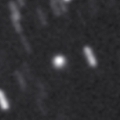
|
Now it is 14.2 mag and visible visually (June 11, Sandor Szabo). It is expected to brighten up to 5-6 mag in 2014 autumn. In 2013, it keeps observable in good condition until autumn when it brigthens up to 13-14 mag.
Date(TT) R.A. (2000) Decl. Delta r Elong. m1 Best Time(A, h)
June 15 16 30.87 21 39.5 4.754 5.492 132 14.8 22:54 ( 0, 77)
June 22 16 23.33 21 43.8 4.731 5.426 128 14.7 22:19 ( 0, 77)
|

|
Now it is 14.1 mag (Mar. 5, Hidetaka Sato). It will be fading slowly after this. But it keeps 15 mag in 2013. It becomes temporarily low in May, but will be observable in good condition again after June in the Southern Hemisphere. It is not observable now in the Northern Hemisphere.
Date(TT) R.A. (2000) Decl. Delta r Elong. m1 Best Time(A, h)
June 15 3 53.68 -24 12.5 7.229 6.672 53 15.1 2:58 (280,-30)
June 22 3 57.01 -23 55.8 7.210 6.700 56 15.1 2:59 (283,-25)
|

|
Now it is 14.0 mag and visible visually (June 11, Sandor Szabo). It reaches up to 14-15 mag from spring to summer. It is observable in excellent condition in the Southern Hemisphere. It locates low in the Northern Hemisphere.
Date(TT) R.A. (2000) Decl. Delta r Elong. m1 Best Time(A, h)
June 15 13 1.91 -21 2.8 2.766 3.361 117 15.1 21:02 ( 26, 30)
June 22 12 56.43 -18 28.9 2.892 3.366 109 15.2 21:04 ( 36, 28)
|
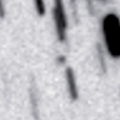
|
Now it is 15.3 mag (June 12, Catalina Sky Survey). It is expected to brighten up to 14 mag in July and August. In the Southern Hemisphere, it keeps observable for a long time until the comet fades out. It keeps observable in good condition until September also in the Northern Hemisphere.
Date(TT) R.A. (2000) Decl. Delta r Elong. m1 Best Time(A, h)
June 15 21 52.20 18 18.4 2.009 2.466 104 15.4 2:58 (307, 65)
June 22 21 43.48 16 30.3 1.858 2.440 112 15.2 2:59 (329, 69)
|

|
It brightened up to 9.0 mag in 2012 autumn (Nov. 4, Juan Jose Gonzalez). However, it faded out unexpectedly around the perihelion passage. Now it is fainter than originally predicted by 4-5 mag. Now it is 15.2 mag (June 3, Hidetaka Sato). In the Southern Hemisphere, it keeps observable in good condition while fading slowly after this. In the Northern Hemisphere, it will not be observable after this.
Date(TT) R.A. (2000) Decl. Delta r Elong. m1 Best Time(A, h)
June 15 2 42.88 -42 27.4 2.702 2.658 76 15.3 2:58 (306,-25)
June 22 2 56.64 -42 39.4 2.726 2.717 78 15.5 2:59 (307,-22)
|

|
It tends to brighten very rapidly near the perihelion. It was so faint as 17.8 mag on May 25, but it brightened rapidly up to 15.5 mag on June 8 (Hidetaka Sato). It is expected to reach up to 12 mag in the evening sky from July to August.
Date(TT) R.A. (2000) Decl. Delta r Elong. m1 Best Time(A, h)
June 15 9 26.81 7 43.3 1.257 1.121 57 16.8 21:02 ( 89, 15)
June 22 9 54.23 7 57.6 1.239 1.102 57 15.4 21:04 ( 90, 15)
|
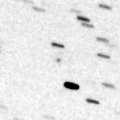
|
It brightened very rapidly. Now it is so bright as 15.3 mag (June 3, Toshiyuki Takahashi). It keeps observable in good condition for a while in the Southern Hemipshere. It will be unobservable in late June in the Northern Hemisphere.
Date(TT) R.A. (2000) Decl. Delta r Elong. m1 Best Time(A, h)
June 15 11 51.67 -18 37.6 1.655 2.105 101 15.5 21:02 ( 43, 23)
June 22 11 37.01 -18 41.3 1.792 2.087 91 15.6 21:04 ( 52, 17)
|

|
It kept as bright as 6-7 mag for a long time from 2011 summer to 2012 spring. Now it is fading. But it is bright as 15.9 mag still now (Apr. 13, Ken-ichi Kadota). Now it is not observable in the Northern Hemisphere. In July, it will be too low to observe also in the Southern Hemipshere.
Date(TT) R.A. (2000) Decl. Delta r Elong. m1 Best Time(A, h)
June 15 8 19.01 -7 18.7 6.708 6.116 50 15.6 21:02 ( 87, -8)
June 22 8 21.68 -7 29.2 6.838 6.175 45 15.7 21:04 ( 90,-14)
|
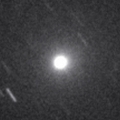
|
Emmanuel Jehin detected the small outburst on May 15. Now it is bright and visible visually at 12.7 mag (June 1, Carlos Labordena).
Date(TT) R.A. (2000) Decl. Delta r Elong. m1 Best Time(A, h)
June 15 10 57.62 -0 22.0 1.933 2.054 81 15.8 21:02 ( 67, 28)
June 22 11 8.76 -2 20.6 2.021 2.076 78 16.0 21:04 ( 69, 23)
|

|
Now it is 17.2 mag (Apr. 11, Hidetaka Sato). It keeps 16 mag and observable in good condition until July.
Date(TT) R.A. (2000) Decl. Delta r Elong. m1 Best Time(A, h)
June 15 18 9.24 22 23.5 1.443 2.265 133 15.8 0:38 ( 0, 77)
June 22 17 50.82 26 34.8 1.485 2.275 129 15.9 23:45 ( 0, 82)
|
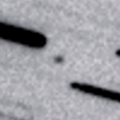
|
It is expected to brighten rapidly and to be observable at 15 mag in good condition from July to August. But actually, it is not detected, fainter than 20 mag (May 19, Hidetaka Sato). It can have been already disintegrated.
Date(TT) R.A. (2000) Decl. Delta r Elong. m1 Best Time(A, h)
June 15 23 50.44 22 27.5 2.108 2.135 77 16.4 2:58 (272, 45)
June 22 23 39.30 22 50.9 1.931 2.119 86 16.2 2:59 (278, 53)
|
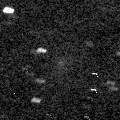
|
It will approach to the Sun down to 0.9 A.U., and to the Earth down to 0.4 A.U. in September. Then it is expected to brighten up to 11-12 mag. Now it is 17.2 mag (May 29, Taras Prystavski). It looks diffuse. In the Northern Hemisphere, it keeps observable in good condition until mid September while brightening rapidly. In the Southern Hemisphre, it keeps locating low for a while. However, it will getting higher after August, and it keeps observable in good condition after that, until the comet fades out.
Date(TT) R.A. (2000) Decl. Delta r Elong. m1 Best Time(A, h)
June 15 13 32.84 51 41.2 1.282 1.614 88 16.6 21:02 (150, 70)
June 22 13 30.16 50 36.8 1.235 1.527 84 16.3 21:04 (139, 67)
|
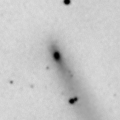
|
Now it is 14.6 mag and visible visually (June 11, Sandor Szabo). It will be observable at 14-16 mag for a long time from 2013 to 2014.
Date(TT) R.A. (2000) Decl. Delta r Elong. m1 Best Time(A, h)
June 15 11 54.96 4 4.2 3.636 3.831 93 16.3 21:02 ( 60, 41)
June 22 11 58.49 3 26.7 3.733 3.829 87 16.4 21:04 ( 65, 36)
|
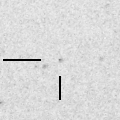
|
Now it is 16.5 mag (Apr. 14, J. F. Hernandez). It keeps observable in good condition at 17 mag from spring to summer.
Date(TT) R.A. (2000) Decl. Delta r Elong. m1 Best Time(A, h)
June 15 18 45.62 -6 20.9 1.982 2.938 155 16.3 1:14 ( 0, 49)
June 22 18 41.93 -5 50.7 1.972 2.947 160 16.3 0:42 ( 0, 49)
|

|
It was predicted to be 17 mag in late May. But actually, it was much fainter, 19-20 mag (May 26, Damian Peach). It was expected to be bright as 16 mag and observable in good condition from summer to autumn. But it can be 18-19 mag at best.
Date(TT) R.A. (2000) Decl. Delta r Elong. m1 Best Time(A, h)
June 15 0 21.08 3 39.3 1.312 1.477 77 16.8 2:58 (287, 29)
June 22 0 42.49 6 4.8 1.263 1.453 78 16.6 2:59 (286, 31)
|

|
Now it is 16.1 mag (Mar. 4, Hidetaka Sato). In the Southern Hemisphere, it keeps observable in good condition for a long time while fading gradually. It is not observable at all in the Northern Hemisphere.
Date(TT) R.A. (2000) Decl. Delta r Elong. m1 Best Time(A, h)
June 15 4 44.91 -42 24.2 4.973 4.664 66 16.7 2:58 (297,-46)
June 22 4 53.20 -41 55.1 4.994 4.697 67 16.7 2:59 (298,-42)
|

|
Now it is 17.1 mag (June 8, Ken-ichi Kadota). It is expected to be observable at 16 mag in good condition in summer and autumn.
Date(TT) R.A. (2000) Decl. Delta r Elong. m1 Best Time(A, h)
June 15 23 33.70 17 7.9 1.996 2.131 83 16.8 2:58 (282, 46)
June 22 23 43.71 18 18.9 1.931 2.133 86 16.7 2:59 (284, 50)
|
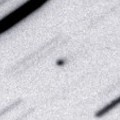
|
Now it is 17.6 mag (May 9, Siding Spring Survey). It is observable at 16.5 mag in good condition from July to September.
Date(TT) R.A. (2000) Decl. Delta r Elong. m1 Best Time(A, h)
June 15 21 34.99 -10 6.2 1.734 2.420 121 17.0 2:58 (338, 42)
June 22 21 38.39 -8 37.3 1.662 2.408 126 16.9 2:59 (346, 45)
|

|
First return of a new periodic comet discovered in 2005. It will be observable at 17 mag for a long time from 2013 to 2014. However, it has not been recovered yet. Not it is fainter than 20 mag (May 29, Jean-Francois Soulier).
Date(TT) R.A. (2000) Decl. Delta r Elong. m1 Best Time(A, h)
June 15 16 57.08 -12 48.1 2.242 3.238 166 17.0 23:21 ( 0, 42)
June 22 16 52.48 -12 53.0 2.256 3.231 160 17.0 22:49 ( 0, 42)
|

|
Not observed yet in this apparition. It will brighten very rapidly near the perihelion passage. It is expected to reach up to 10 mag from autumn to winter. In the Northern Hemipshere, it keeps observable in excellent condition until the comet fades out. In the Southern Hemisphere, it keeps observable in good condition within 2013, but it will not be observable in 2014.
Date(TT) R.A. (2000) Decl. Delta r Elong. m1 Best Time(A, h)
June 15 22 46.02 -21 5.5 1.943 2.463 108 17.2 2:58 (325, 25)
June 22 22 51.43 -20 28.2 1.819 2.414 113 17.0 2:59 (330, 29)
|
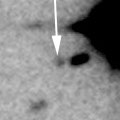
|
Now it is 17.4 mag (June 15, K. Hills). It keeps 17 mag for a long time from 2012 to 2013, and will be observable in good condition in the Southern Hemisphere. It is not observable at all in the Northern Hemisphere.
Date(TT) R.A. (2000) Decl. Delta r Elong. m1 Best Time(A, h)
June 15 2 18.53 -64 51.2 4.737 4.944 95 17.3 2:58 (331,-30)
June 22 2 18.07 -66 0.5 4.694 4.955 98 17.3 2:59 (333,-28)
|

|
First return of a new periodic comet discovered in 1998. It is expected to be observable at 15.5 mag in good condition from 2013 autumn to early 2014. It locates high in the Southern Hemisphere. But it has not been recovered yet.
Date(TT) R.A. (2000) Decl. Delta r Elong. m1 Best Time(A, h)
June 15 1 5.66 -18 15.0 3.203 3.142 77 17.5 2:58 (297, 6)
June 22 1 14.46 -18 8.7 3.092 3.111 81 17.4 2:59 (300, 10)
|
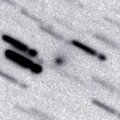
|
Now it is 16.7 mag (June 8, Ken-ichi Kadota). It will be fading after this. It locates low in the Northern Hempshere.
Date(TT) R.A. (2000) Decl. Delta r Elong. m1 Best Time(A, h)
June 15 18 40.37 -23 51.4 2.057 3.048 164 17.4 1:09 ( 0, 31)
June 22 18 24.48 -21 49.3 2.088 3.102 174 17.5 0:26 ( 0, 33)
|
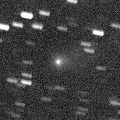
|
It brightened up to 15.5 mag in 2012 summer. Although it has already passed the perihelion, it tends to become brightest after the perihelion passage. Now it is 18.1 mag, fainter than this ephemeris (Apr. 11, Hidetaka Sato).
Date(TT) R.A. (2000) Decl. Delta r Elong. m1 Best Time(A, h)
June 15 22 37.09 -17 40.8 3.112 3.580 109 17.6 2:58 (325, 29)
June 22 22 38.83 -17 56.2 3.037 3.597 115 17.5 2:59 (332, 32)
|

|
It has brightened in outburst up to 14 mag twice, in 2006 January and 2011 May. It will pass the perihelion in 2015. It keeps observable at 17 mag for a long time after this.
Date(TT) R.A. (2000) Decl. Delta r Elong. m1 Best Time(A, h)
June 15 19 13.08 -17 36.0 5.686 6.627 155 17.7 1:41 ( 0, 37)
June 22 19 10.64 -17 39.1 5.633 6.612 163 17.6 1:11 ( 0, 37)
|
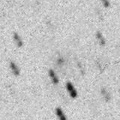
|
Because it is a very distant comet, it will be fading very slowly. It keeps observable at 17.5 mag in 2013.
Date(TT) R.A. (2000) Decl. Delta r Elong. m1 Best Time(A, h)
June 15 23 23.95 11 21.0 9.719 9.731 87 17.8 2:58 (290, 44)
June 22 23 24.73 11 23.8 9.615 9.738 93 17.8 2:59 (296, 49)
|

|
Now it is 17.4 mag (June 8, Catalina Sky Survey). It keeps 17-18 mag for a long time from 2013 to 2014. It keeps observable in good condition in the Southern Hemisphere. In the Northern Hemisphere, it is only observable until 2012 July.
Date(TT) R.A. (2000) Decl. Delta r Elong. m1 Best Time(A, h)
June 15 14 25.81 -17 35.5 4.382 5.160 135 17.8 21:02 ( 4, 37)
June 22 14 19.43 -17 56.8 4.450 5.137 127 17.8 21:04 ( 14, 36)
|
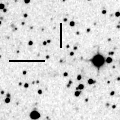
|
Now it is 17.7 mag (June 10, P. Lindner). It is expected to brighten up to 14 mag from 2015 to 2016.
Date(TT) R.A. (2000) Decl. Delta r Elong. m1 Best Time(A, h)
June 15 17 51.87 -2 3.7 7.784 8.736 158 17.9 0:20 ( 0, 53)
June 22 17 49.60 -2 2.7 7.748 8.701 158 17.8 23:46 ( 0, 53)
|
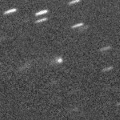
|
It has been observed at 17 mag for a long time from 2009 to 2012. It is also observable at 18 mag in good condition in 2013.
Date(TT) R.A. (2000) Decl. Delta r Elong. m1 Best Time(A, h)
June 15 22 21.17 8 42.1 8.880 9.159 102 17.9 2:58 (310, 54)
June 22 22 18.64 8 42.9 8.787 9.179 109 17.8 2:59 (320, 58)
|
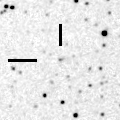
|
Now it is 17.6 mag (June 3, Mt. Lemmon Survey). It keeps 18 mag for a long time from 2013 to 2014.
Date(TT) R.A. (2000) Decl. Delta r Elong. m1 Best Time(A, h)
June 15 15 10.27 -15 30.1 2.675 3.559 145 17.8 21:35 ( 0, 39)
June 22 15 8.56 -15 16.8 2.719 3.543 138 17.9 21:05 ( 0, 40)
|

|
Now it is 17.2 mag (May 10, Siding Spring Survey). Now it is brightest, and will be fading after this. It locates low in the Northern Hemisphere.
Date(TT) R.A. (2000) Decl. Delta r Elong. m1 Best Time(A, h)
June 15 12 28.29 -24 38.5 3.621 4.100 111 17.9 21:02 ( 32, 23)
June 22 12 27.14 -22 36.9 3.747 4.114 104 18.0 21:04 ( 40, 21)
|
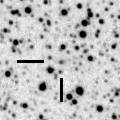
|
It brightened up to 2 mag by unusual major outburst in 2007. It was observed around aphelion at 22 mag. It will return in 2014. It will be 14 mag at best by normal prediction. Now it is 17.0 mag, a bit brighter than this ephemeris (June 13, A. Maury, J. F. Soulier).
Date(TT) R.A. (2000) Decl. Delta r Elong. m1 Best Time(A, h)
June 15 17 29.87 -49 6.5 1.959 2.908 154 18.1 23:53 ( 0, 6)
June 22 17 21.34 -48 45.7 1.932 2.877 153 18.1 23:17 ( 0, 6)
|

|
It was predicted to be 17 mag. But actually, it is much fainter, 19.0 mag (June 3, Hidetaka Sato).
Date(TT) R.A. (2000) Decl. Delta r Elong. m1 Best Time(A, h)
June 15 18 13.63 -14 53.2 1.693 2.694 167 18.4 0:42 ( 0, 40)
June 22 18 8.39 -14 15.3 1.696 2.704 170 18.5 0:09 ( 0, 41)
|
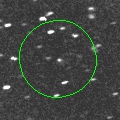
|
It was expected to be bright as 14 mag and observable in excellent condition in summer. But actually, it is so faint as 17.8 mag, much fainter than expected by 4 mag (June 12, Katsumi Yoshimoto).
Date(TT) R.A. (2000) Decl. Delta r Elong. m1 Best Time(A, h)
June 15 14 55.85 0 21.0 0.876 1.749 135 18.6 21:20 ( 0, 55)
June 22 14 56.77 -1 10.9 0.893 1.730 129 18.5 21:04 ( 4, 54)
|
|
![]()
 C/2012 L2 ( LINEAR )
C/2012 L2 ( LINEAR ) 246P/2010 V2 ( NEAT )
246P/2010 V2 ( NEAT ) C/2006 S3 ( LONEOS )
C/2006 S3 ( LONEOS ) C/2010 S1 ( LINEAR )
C/2010 S1 ( LINEAR ) C/2012 V2 ( LINEAR )
C/2012 V2 ( LINEAR ) 29P/Schwassmann-Wachmann 1
29P/Schwassmann-Wachmann 1 C/2012 S1 ( ISON )
C/2012 S1 ( ISON ) C/2013 E2 ( Iwamoto )
C/2013 E2 ( Iwamoto ) C/2011 J2 ( LINEAR )
C/2011 J2 ( LINEAR ) C/2011 R1 ( McNaught )
C/2011 R1 ( McNaught ) (596) Scheila
(596) Scheila 117P/Helin-Roman-Alu 1
117P/Helin-Roman-Alu 1 C/2012 K1 ( PanSTARRS )
C/2012 K1 ( PanSTARRS ) C/2009 F4 ( McNaught )
C/2009 F4 ( McNaught ) C/2012 K6 ( McNaught )
C/2012 K6 ( McNaught ) C/2012 S3 ( PanSTARRS )
C/2012 S3 ( PanSTARRS ) C/2011 F1 ( LINEAR )
C/2011 F1 ( LINEAR ) 26P/Grigg-Skjellerup
26P/Grigg-Skjellerup C/2013 G6 ( Lemmon )
C/2013 G6 ( Lemmon ) C/2009 P1 ( Garradd )
C/2009 P1 ( Garradd ) 63P/Wild 1
63P/Wild 1 C/2013 F3 ( McNaught )
C/2013 F3 ( McNaught ) C/2012 V1 ( PanSTARRS )
C/2012 V1 ( PanSTARRS ) C/2013 G5 ( Catalina )
C/2013 G5 ( Catalina ) P/2012 B1 ( PanSTARRS )
P/2012 B1 ( PanSTARRS ) P/2012 F2 ( PanSTARRS )
P/2012 F2 ( PanSTARRS ) 184P/Lovas 2
184P/Lovas 2 C/2011 O1 ( LINEAR )
C/2011 O1 ( LINEAR ) 257P/2012 F4 ( Catalina )
257P/2012 F4 ( Catalina ) C/2013 J2 ( McNaught )
C/2013 J2 ( McNaught ) P/2005 L1 ( McNaught )
P/2005 L1 ( McNaught ) 154P/Brewington
154P/Brewington C/2012 C1 ( McNaught )
C/2012 C1 ( McNaught ) P/1998 Y2 ( Li )
P/1998 Y2 ( Li ) C/2013 G2 ( McNaught )
C/2013 G2 ( McNaught ) 152P/Helin-Lawrence
152P/Helin-Lawrence 174P/(60558) 2000 EC98 ( Echeclus )
174P/(60558) 2000 EC98 ( Echeclus ) C/2012 Q1 ( Kowalski )
C/2012 Q1 ( Kowalski ) C/2013 G7 ( McNaught )
C/2013 G7 ( McNaught ) C/2011 KP36 ( Spacewatch )
C/2011 KP36 ( Spacewatch ) C/2008 S3 ( Boattini )
C/2008 S3 ( Boattini ) P/2013 G1 ( Kowalski )
P/2013 G1 ( Kowalski ) C/2013 J3 ( McNaught )
C/2013 J3 ( McNaught ) 17P/Holmes
17P/Holmes 91P/Russell 3
91P/Russell 3 98P/Takamizawa
98P/Takamizawa![]()










































